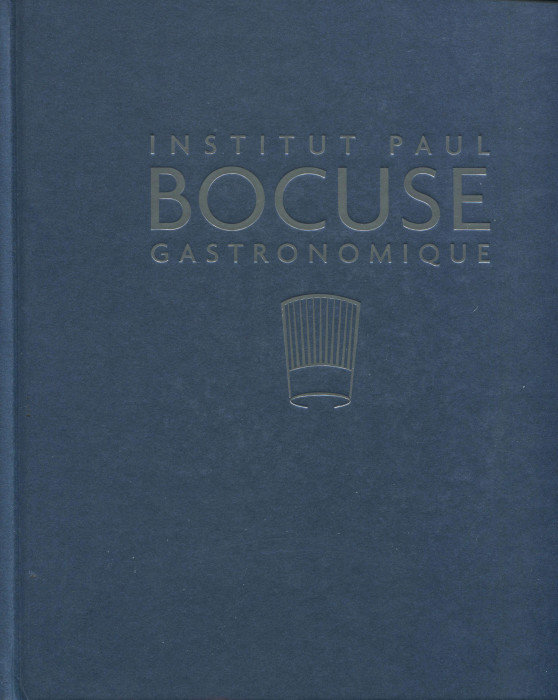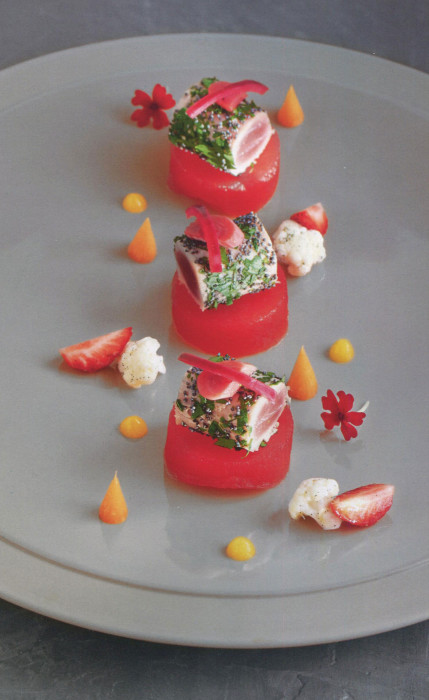How do you write a cookbook review for a tome with over 700 pages? And that, curiously, has only 70 recipes?
It’s easy. This is the best cookbook of 2016. One of the best in the past decade. If you have room for only a couple of cookbooks in your life, this has to be one of those books.
Twenty-five years ago, world-class chef Paul Bocuse opened his culinary school, his Institute Gastronomique, in Lyon. Over the decades, the Institut has produced hundreds of superior chefs. A bounty of Michelin Stars adorn the resumes of many graduates.
The Institut is just the place you might dream about for “going to cooking school in France.” It’s considered the best in the world and at the school you would experience the rigor of training that makes French food the grandest in the world. Yes, I love Italian and American and Chinese and Japanese cuisines but there is no question that the French have perfected culinary techniques. And, that perfection lets an Institut-trained student compete anywhere, anytime.
Here’s the proof. Ever had Tuna Tataki in a Japanese restaurant? Here’s the way it appears at the Institut when served with Herbs and Poppy Seeds, Strawberries, and Balsamic Vinegar.
Yes, French technique translates to any cuisine.
Why is this book so massive? There are over 1800 color photographs offering you a visual education for every recipe and for every technique. Besides the 70 recipes, over 250 techniques are explained, in text and with those pictures. The techniques range from the simple, like chopping herbs, to the complex like making Pike Quenelles. Those very techniques are then applied in the recipes themselves. So, you may well find yourself happily flipping pages back and forth.
What are the recipes like? That Tuna Tataki is a good example. There are dishes from around the world, all presented in modernist style with complementary sauces that will offer you a little challenge in your home kitchen. A little challenge but no barrier. Here are some examples:
Arctic Char Cooked a la Nage in Barigoule Sauce [red pepper, fennel, carrot, onion, star anise, balsamic vinegar, and white wine]
Foie Gras Spheres with Sour Cherry Chutney and Hazelnut Sables
Scrambled Eggs with Truffles, Puff Pastry Twists with Espelette Pepper and Comte
Veal Medallions with Morel Cream
Duckling Breasts with Spices and Roasted Peaches
Warm Pigeon Salad with giblet Pate and Bars of Foie Gras
Roasted Turbot with Potatoes, Chanterelles, Cuttlefish and Vegetable Vierge Sauce with Basil
These are not dishes you will find at your corner restaurant. Not at your corner bistro. These are world-class recipes — in terms of ingredients, flavors, and visual appeal — but now most happily ones you can enjoy in your own kitchen. For all the complexity of the final dish, the list of ingredients typically is modest, the preparation divided into a few simple steps, and the “oomph” factor is achieved from the “Assemble the plate” final step.
This is an amazing book, a treasure trove that you will spend hours studying and, yes, salivating over. If you love food, if you love cooking, if you can’t quite make it to Lyon for a couple of years, you can buy and use Institut Paul Bocuse Gastronomique. Your culinary life will be happily and seriously elevated.


